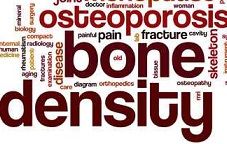Article
Osteoporosis Drugs' Mechanisms Differ
Author(s):
Drugs used to increase bone mineral density have different mechanisms and their effectiveness is better measured by looking at bone mineralization density distribution, a New York study found.

The underlying mechanisms that lead to bone mineral density (BMD) increases are different in patients taking teriparatide (TPTD) and those taking zoledronic acid (ZOL). The findings are in a study that was conducted by David W. Dempster, PhD, FRMS, of the Regional Bone Center at Helen Hayes Hospital in West Haverstraw, NY, and colleagues and will appear in the Journal of Bone and Mineral Research.
The authors used data from the Skeletal Histomorphometry in Patients on Teriparatide or Zoledronic Acid Therapy (SHOTZ), which compared the effects of 2 years of treatment with either teriparatide or zoledronic acid on post-menopausal women. The researchers say, “Bone formation indices were consistently higher for patients receiving teriparatide versus zoledronic acid at both early and later time points.” However, in this study, the researchers looked at bone mineralization density distribution (BMDD), rather than bone mineral density (BMD).
The difference between BMD and BMDD, according to the authors is that “BMDD reflects bone turnover, mineralization kinetics, and average bone matrix age; provides additional insight into the structure-function relation of the bone matrix, including its elasticity, strength, and toughness; and differs from bone mineral density as measured by DXA, which is an estimate of mean areal mineral density in a scanned area of whole bone (organ level).” This study was designed to compare the BMDD of cancellous and cortical bone in postmenopausal women with osteoporosis.
In order to conduct the comparison, the researchers used samples from the SHOTZ study and performed quantitative backscattered electron imaging (qBEI). They obtained bone samples from 52 healthy control subjects to create a reference BMDD. Data was available from the SHOTZ study for 10 patients receiving teriparatide and 10 patients receiving zoledronic acid.
Although the SHOTZ study showed that teriparatide appeared to be more effective than zoledronic acid, the qBEI revealed more information. The researchers say that they found “significant differences between the two treatment groups,” including that the BMDD “differences indicate a higher mineralization density and a more homogeneous mineral content with zoledronic acid compared with teriparatide” at both month 6 and month 24.
The researchers say, “In this study TPTD stimulated new bone formation, producing a bone matrix mineralization that remained relatively heterogeneous with a stable mean mineral content with continuation of therapy, while treatment with ZOL slowed the bone turnover rate, which would prolong secondary mineralization, producing a more homogenous and, over time, a more highly mineralized bone matrix.” Both TPTD and ZOL have been shown to reduce the risk of fractures, and this study helps to explain how each of the drugs works.





